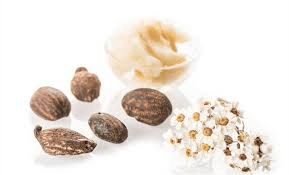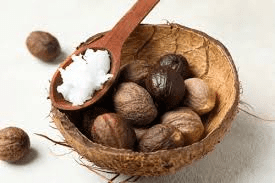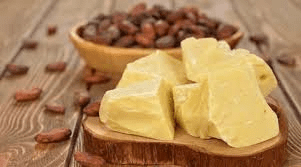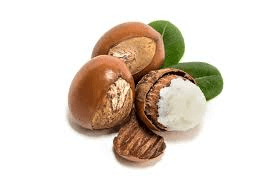Shea nuts come from the shea tree, which grows primarily in West Africa. These nuts are important because they can be processed into shea butter, a popular ingredient in cosmetics, skincare products, and even food. The journey from raw shea nuts to finished products involves several steps, including processing, packaging, and exporting. Each step is crucial for maintaining the quality of the shea nuts and ensuring they reach their destination in the best condition.
The first step in handling shea nuts is processing. After harvesting, the nuts need to be cleaned to remove any dirt, debris, or outer shells. This initial cleaning helps prevent contamination and prepares the nuts for further processing. The next phase is drying. Freshly harvested shea nuts have high moisture content, which can lead to mold and spoilage if not properly dried.
To ensure the nuts dry evenly, they are typically spread out in thin layers under the sun. The drying process can take several days, depending on weather conditions. Once the nuts are sufficiently dry, they are roasted to enhance their flavor and make it easier to extract the butter.
Roasting also helps in separating the nut from the kernel. After roasting, the nuts are cracked open to separate the kernels, which are then ground into a paste. This paste undergoes further processing to extract the shea butter.
The extraction can be done using traditional methods like hand-kneading or modern mechanical methods. The final step in processing is filtering the shea butter to remove any remaining solids and impurities.
Packaging is the next important step. Proper packaging ensures the shea nuts or shea butter remain fresh and uncontaminated during storage and transport. For shea nuts, packaging typically involves placing them in clean, dry, and airtight containers.
These containers are often made of materials that protect against moisture and pests. For shea butter, it is packaged in airtight containers that prevent exposure to air and light, which can degrade the quality. Both shea nuts and shea butter must be labeled correctly to provide information on their origin, processing, and expiration dates.
Exporting shea nuts involves several logistical and regulatory considerations. Before exporting, it is essential to comply with the regulations of the importing country. This includes ensuring the product meets quality standards and obtaining any necessary certifications. For instance, some countries require that shea butter is certified organic or free from certain contaminants.
Exporters must also prepare the necessary documentation, such as export permits, health certificates, and invoices. Proper documentation ensures that the shipment can pass through customs smoothly and reach its destination without delays.
The process of handling shea nuts from harvesting to export involves careful attention to detail. Processing includes cleaning, drying, roasting, and extracting the shea butter. Packaging protects the product during storage and transport, while exporting requires compliance with international regulations and proper documentation.
How to Process Shea Nuts for Exportation

1. Harvesting: Collect ripe shea nuts from the shea tree. Ensure that the nuts are fully matured and have fallen from the tree, or use a pole to shake the tree to get the nuts down. Avoid picking unripe nuts as they may not process well.
2. Drying: Spread the harvested shea nuts under the sun to dry for about 7 to 10 days. This helps to reduce the moisture content and prevent mold. Ensure they are turned regularly to dry evenly.
3. Shelling: Once dried, remove the outer shell of the shea nuts. You can do this manually by cracking the shell or use a mechanical sheller. Ensure that you remove all the shells to avoid contamination in the final product.
4. Sorting: After shelling, sort the nuts to remove any defective or broken ones. Good quality nuts should be free from mold, rot, and any foreign materials.
5. Roasting: Roast the shelled shea nuts at a temperature of around 80-90°C for 30 minutes. This helps to enhance the flavor and further reduce moisture content. Be cautious not to over-roast as it can affect the quality.
6. Grinding: Grind the roasted shea nuts into a paste using a food processor or a mill. This paste can be further processed to extract shea butter or used in other products.
7. Filtering: Filter the shea paste to remove any remaining shell fragments or impurities. This step ensures that you have a smooth and clean product for export.
8. Packaging for Storage: Place the processed shea nuts or paste in clean, dry containers. Seal them properly to maintain freshness and prevent contamination before export.
9. Quality Check: Perform a final quality check to ensure that the shea nuts meet export standards. This includes checking for size, color, texture, and absence of foreign materials.
10. Documentation: Prepare all necessary documentation required for exportation, including certificates of origin, quality assurance certificates, and any other relevant paperwork.
Read Also : Samoyed: Description, Health, Origin and Care Guide
How to Package Shea Nuts for Exportation

1. Choose Appropriate Packaging Material: Use durable, moisture-proof packaging materials like polypropylene bags or vacuum-sealed pouches to protect the shea nuts from external factors during transit.
2. Measure and Weigh: Accurately measure and weigh the shea nuts to ensure consistency in packaging. This step helps in maintaining uniformity and meeting export regulations.
3. Bagging: Place the shea nuts in the chosen packaging material. Ensure that the bags are filled to the recommended capacity to prevent shifting and damage during transportation.
4. Sealing: Properly seal the bags using heat sealers or other sealing methods to keep the contents secure and fresh. Check for any air leaks or openings.
5. Labeling: Clearly label each package with necessary information such as product name, origin, weight, and expiration date. Labels should be legible and comply with international standards.
6. Palletizing: Arrange the packaged shea nuts on pallets for easy handling and transportation. Ensure that the pallets are sturdy and properly stacked to prevent shifting during shipment.
7. Wrapping: Wrap the entire pallet with stretch film or shrink wrap to protect the packages from dust, moisture, and damage during transportation.
8. Inspection: Conduct a final inspection of the packaged goods to ensure that all packages are properly sealed, labeled, and free from defects.
9. Documentation: Prepare packaging and shipping documents, including packing lists and export declarations, to ensure smooth processing through customs.
10. Storage: Store the packaged shea nuts in a clean, dry warehouse until they are ready for export. Maintain proper inventory records to manage stock efficiently.
How to Export Shea Nuts for Profits
1. Market Research: Research the target market to understand demand, pricing, and competition. Identify key importers and distributors who are interested in shea nuts.
2. Compliance: Ensure compliance with both local and international export regulations, including quality standards and certification requirements.
3. Pricing Strategy: Set competitive prices based on market research, production costs, and profit margins. Consider factors like shipping costs and duties.
4. Find Buyers: Use trade shows, online platforms, and industry networks to find potential buyers. Build relationships with importers and negotiate favorable terms.
5. Secure Contracts: Draft clear contracts outlining terms of sale, payment methods, and delivery schedules. Ensure that all parties agree to the terms before proceeding.
6. Shipping Logistics: Organize shipping logistics including transportation, customs clearance, and insurance. Choose reliable freight forwarders to handle the export process.
7. Quality Control: Implement strict quality control measures to ensure that the shea nuts meet the required standards and specifications of the importing country.
8. Marketing: Promote your shea nuts through various marketing channels to increase visibility and attract more buyers. Highlight the unique qualities of your product.
9. Customer Service: Provide excellent customer service to build trust and encourage repeat business. Address any issues promptly and professionally.
10. Monitor and Adjust: Continuously monitor market trends and customer feedback. Adjust your strategies as needed to improve profitability and meet market demands.
Read ALso : Methods of Crop Improvement and Production of Hybrid Seed
Frequently Asked Questions (FAQ’s) About Shea Nuts

1. What are shea nuts? Shea nuts are the seeds of the shea tree, which are used to produce shea butter. They are known for their high oil content and are used in various cosmetic and food products.
2. How are shea nuts harvested? Shea nuts are harvested from the shea tree when they fall to the ground. They can also be collected by shaking the tree or using tools to help gather the nuts.
3. What is the process of making shea butter? The process involves roasting the shea nuts, grinding them into a paste, and then extracting the oil through boiling or mechanical means.
4. What are the benefits of shea butter? Shea butter is known for its moisturizing properties and is used in skincare products to hydrate and protect the skin. It also has anti-inflammatory and antioxidant benefits.
5. How long does it take for shea nuts to dry? Shea nuts typically take 7 to 10 days to dry under the sun. Proper drying is crucial to prevent mold and ensure quality.
6. Can shea nuts be exported without processing? It is generally preferred to process shea nuts before export to meet quality standards and add value. Unprocessed nuts might face higher shipping costs and quality issues.
7. What are the common packaging methods for shea nuts? Shea nuts are commonly packaged in moisture-proof bags or pouches. They may also be palletized and wrapped for protection during shipping.
8. What are the key markets for shea nuts? Key markets for shea nuts include the United States, Europe, and various parts of Asia, where they are used in cosmetics, food products, and pharmaceuticals.
9. How can I find buyers for shea nuts? You can find buyers through trade shows, industry networks, online marketplaces, and by reaching out to importers and distributors in target markets.
10. What are the common quality issues with shea nuts? Common quality issues include mold, rot, and contamination from foreign materials. Ensuring proper drying, shelling, and handling helps to maintain high quality.
Read Also : 10 Important Business Management Skills

